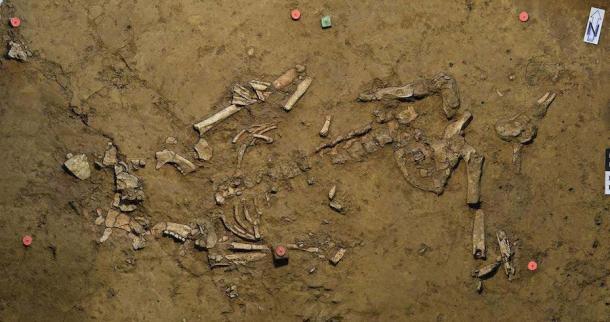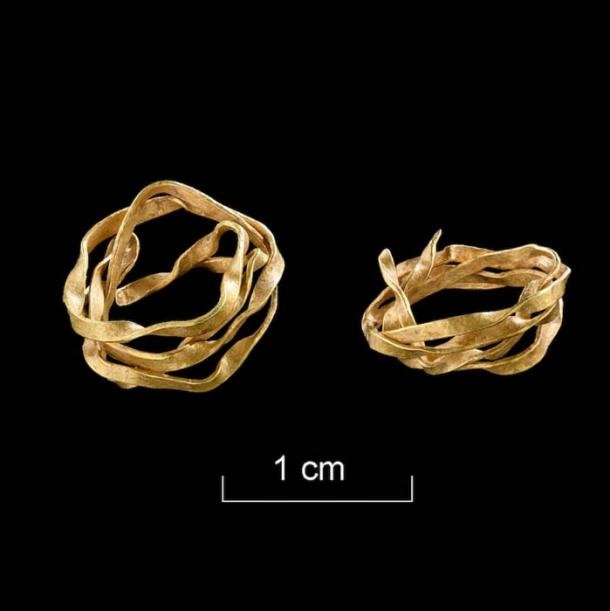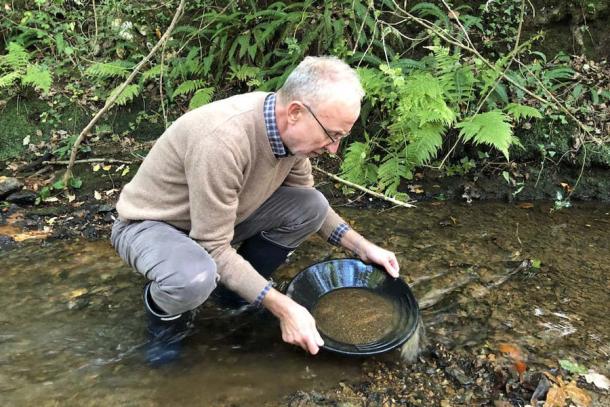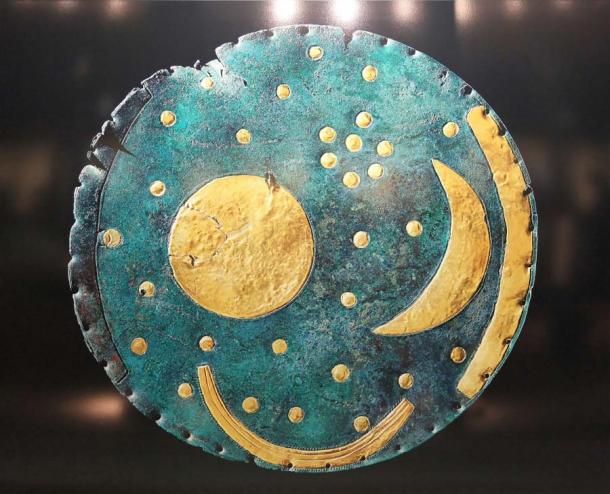Archaeologists digging in the state of Baden-Württemberg in southwestern Germany recovered a most uncommon item. Inside a 3,800-year-old grave, dating to the Early Bronze Age, they found a small, spiral-shaped gold ornament made from real gold wire. As it turns out, this gold ornament is the oldest precious metal object ever excavated in that part of Germany, according to a University of Tübingen press release .
The expedition that recovered the gold ornament was organized by Professor Raiko Krauss, an archaeologist from the University of Tübingen, and Dr. Jörg Bofinger, from the Baden-Württemberg State Office for Cultural Heritage Management. The grave and its contents were found in the Reusten district of the town of Ammerbuch, 4.5 miles (7 km) from the city of Tübingen.
“The burial matches a group of other burials from the Bronze Age on the plateau and is apparently related to a hilltop settlement on the nearby Kirchberg [mountain] of Reusten,” the researchers explained in an article announcing their discovery in the journal Praehistorische Zeitschrift .

The Early Bronze Age female burial as found. The green pin (top center) marks the place the spiral gold ornament was uncovered next to the skeleton. ( Eberhard Karls University of Tübingen )
A Prized Personal Possession
The rolled gold ornament has been tentatively identified as a hair ornament of some type. It presumably belonged to the woman whose skeleton was recovered from the grave. She was apparently a person of high social status, given her possession of such an unusual luxury item.
The object was found lying alongside the woman, but near the hip rather than the skull. This suggests she was not actually wearing the spiral ornament at the time she was buried. It was the only item of any type found inside the grave, so it must have been something she valued greatly.
The skeleton was well-preserved, which allowed for precise radiocarbon dating. The woman was buried sometime between 1850 and 1700 BC, when Central Europe was amid a transition from the Late Neolithic Age to the Early Bronze Age . In fact, the woman was laid in her grave in a fetal position facing south, which was a tradition that has been observed in many other burials dating to the Late Neolithic .

The small, wire spiral gold ornament found in the grave of an Early Bronze Age woman in Ammerbuch, Baden-Württemberg, Germany . ( Eberhard Karls University of Tübingen )
Gold Alloy Forensics Leads to Source in Cornwall, England
One of the most interesting aspects of this discovery is the nature of the gold used to make the jewelry piece.
Chemical analysis revealed that the gold was a naturally occurring alloy. Its chemical composition included 20 percent silver, between one and two percent copper, and smaller quantities of platinum and tin. Gold alloys that have been mined but not processed have unique chemical “fingerprints,” which often allows researchers to trace their origins to specific geographical areas.
When the archaeologists traced this particular alloy to its source, they were completely surprised! It seems this alloy’s “fingerprint” matched that of gold that comes from the Cornwall region in the southwestern United Kingdom. More precisely, this gold likely would have been panned from the Carnon River , which at one time produced significant quantities of this most desirable precious metal.

Geologist and researcher Gregor Borg of Halle-University, Germany panning for gold in the Carnon River in Cornwall, England, where the recently discovered gold bracelet’s gold alloy originated from in the late-Neolithic-Early-Bronze-Age era. (Nicolas Meyer / Campus Halensis )
The modern county of Cornwall is about 750 miles (1,200 km) from the city of Tübingen. This means the gold used to make the hair ornament (and possibly the ornament itself) traveled a great distance before reaching its final destination. Long-distance trade networks were clearly involved in its transportation, highlighting the fact that trade played a significant role in Early Bronze Age European life.
During this period, the dominant cultures in the two respective regions were the Unetice culture in Germany (and broader Central Europe) and the Wessex Culture in southern Britain. It is already known that these two cultures were trading with each other during the Bronze Age, so the discovery that the ornament’s gold came from Cornwall is not entirely shocking.
Nevertheless, this was an unusual discovery. Older gold and precious metal finds in the region of Germany where the gold ornament was found were linked almost exclusively to gold that was mined in southeastern Europe, which would have traveled in the opposite direction from gold coming in from Cornwall. It appears that trade networks were in the process of expanding during the Bronze Age, and that more vigorous trade connections between ancient Britain and Central Europe were one result of this expansion.

A photograph of the “famous” Nebra Sky Disk, found not far from where the spiral gold ornament was unearthed, was made by the German Neolithic-Early-Bronze-Age Unetice culture, which also made incredible pure gold cups, likely from the same gold alloy as the golden “hair ornament” recently found in the southwestern German Bronze Age burial site. (Frank Vincentz / CC BY-SA 4.0 )
Who Was the Mysterious Bronze Age Woman?
If the woman buried in the grave was a person of elite status, as the research team speculates, it is curious that she was only buried with one piece of jewelry and no other items. This could indicate that she was not a person of wealth and power at all, but someone who’d been given one special item that she treasured.
Perhaps she’d been a servant of a wealthy person and had been given the gold item as a gift from her appreciative employer. Or perhaps she was prosperous at one time but came from a family that had encountered hard times and had been forced to sell most of their valuables.
Given the extremely sparse nature of her burial goods collection, it’s impossible to make definitive judgments about who the Early Bronze Age woman was and what her life was really like.
If other ancient graves are unearthed in the area in the future, however, that situation could change dramatically.
Top image: The wire spiral gold ornament found in the grave of an Early Bronze Age woman in Ammerbuch, Baden-Württemberg, Germany . Source: Eberhard Karls University of Tübingen
By Nathan Falde
 RSS Feed
RSS Feed















 May 27th, 2021
May 27th, 2021  Awake Goy
Awake Goy  Posted in
Posted in  Tags:
Tags: 













